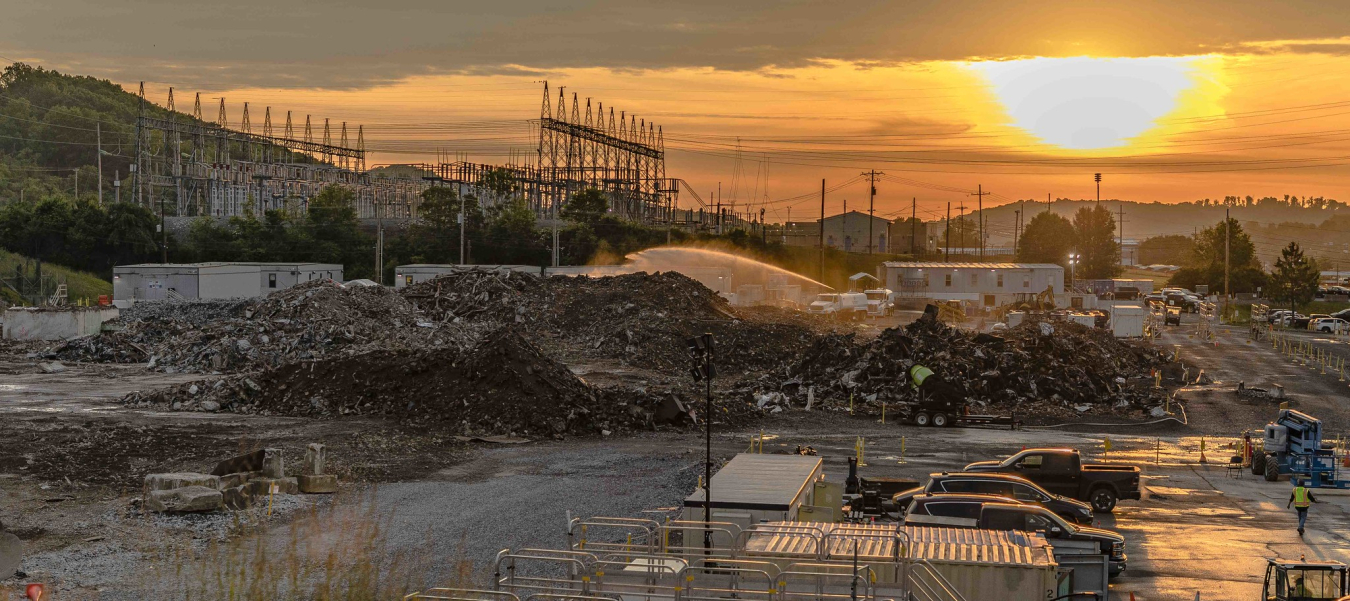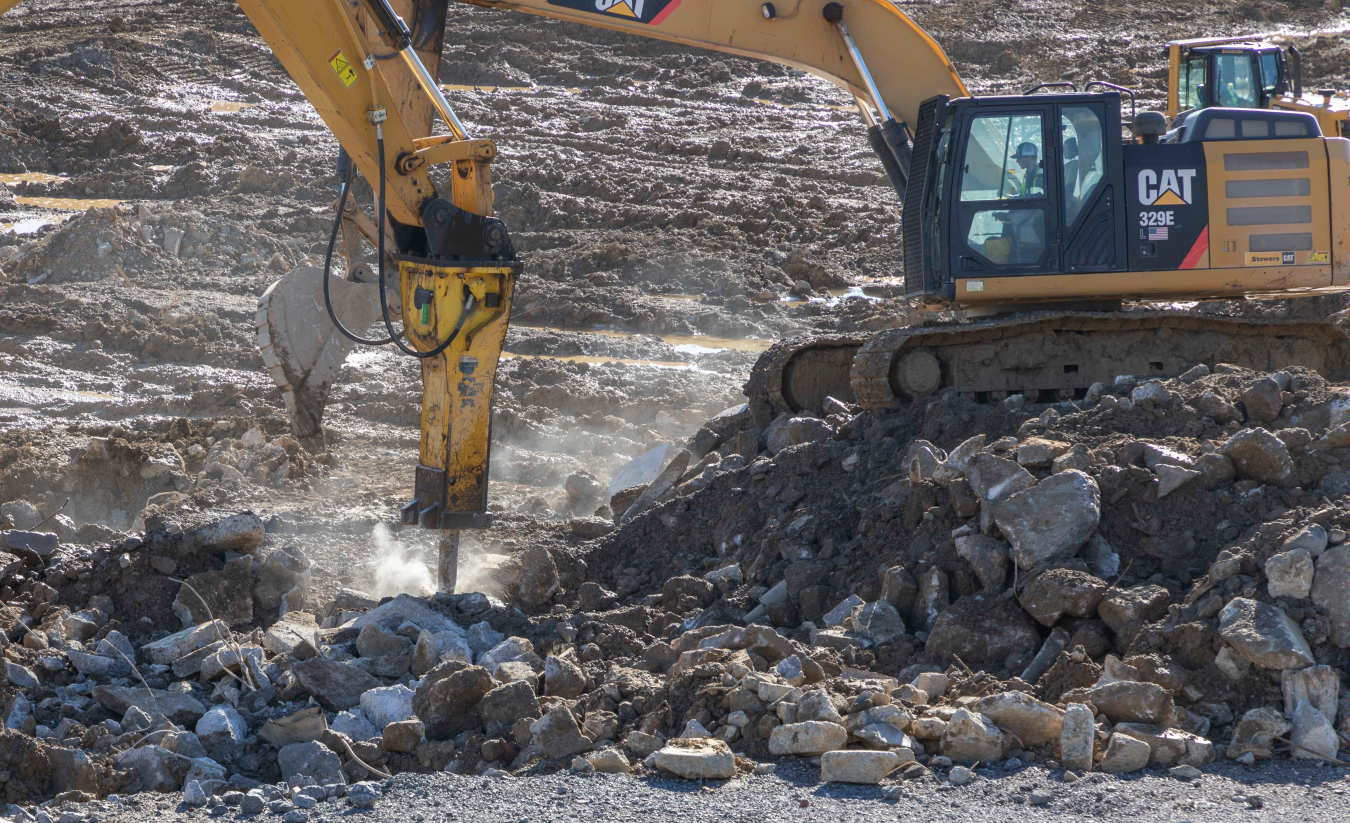Overview
The Oak Ridge Site, located in eastern Tennessee, is one of the three original sites in the Manhattan Project. The U.S. Army Corps of Engineers began acquiring land in the area in October 1942. By March 1943, 56,000 acres were sealed behind fences and major industrial facilities were under construction. The K-25 and Y-12 plants were built to explore different methods to enrich uranium, while the X-10 Site was established as a pilot plant for the Graphite Reactor and to explore methods for the production of plutonium.
Throughout the following decades, the three sites — K-25 (present day East Tennessee Technology Park (ETTP)), X-10 (present day Oak Ridge National Laboratory (ORNL)), and Y-12 — purified isotopes, conducted advanced research, manufactured weapons components, and enriched uranium. These activities created environmental legacies that placed Oak Ridge on EPA’s National Priorities List in 1989.
The Oak Ridge Office of Environmental Management (OREM) is responsible for the CERCLA cleanup at Y-12 and ORNL. OREM has achieved significant risk reduction across the Oak Ridge site, including the removal of all facilities at ETTP. Now a new chapter of cleanup is underway in Oak Ridge.
With demolition complete at ETTP, OREM transitioned the skilled, experienced workforce from there to address the many high-risk facilities at ORNL and Y-12. Demolition prep and deactivation work is already underway at numerous buildings at those sites. OREM’s work will address DOE’s largest inventory of high-risk, excess contaminated facilities (former research reactors, isotope production facilities at ORNL, and former process buildings and former process buildings at Y-12); eliminate the site’s remaining inventory of uranium-233; and remediate areas with dense mercury contamination to provide valuable real estate for NNSA and SC missions.
Throughout all this work, OREM works to keep the surrounding communities in Anderson and Roane counties and the city of Oak Ridge safe and informed. The program also fosters and maintains strong partnerships by involvement with organizations focused on economic opportunities including the East Tennessee Economic Council, Energy Technology and Environmental Business Association, Chamber of Commerce, and the Community Reuse Organization of East Tennessee. OREM launched a first-of-a-kind news program to raise awareness about its impact and mission. Additionally, OREM leadership provides updates and is available to answer the public’s questions at monthly Oak Ridge Site Specific Advisory Board meetings and at other organized public events.
OREM representatives also regularly correspond with local city and county officials.

Calendar Year 2022 Accomplishments
- Completed cleanup and transfer of Biology Complex area – a 2022 EM priority
- Began processing uranium-233 material in hot cells – a 2022 EM priority
- Completed demolition on the Bulk Shielding Reactor at ORNL
- Completed demolition on the Criticality Experiment Laboratory at Y-12
- Finished construction of the Sludge Processing Mock Test Facility
- Signed the final Record of Decision with regulators for the Environmental Management Disposal Facility
- Transitioned to the new end-state contract for cleanup on the Oak Ridge Reservation
Key Regulatory Milestones 2023–2033
Cleanup of the Oak Ridge Reservation is governed by a Federal Facility Agreement among DOE, EPA, and the Tennessee Department of Environment and Conservation. This agreement establishes the guidelines and milestones for cleanup in Oak Ridge in accordance with CERCLA and other laws.
- Complete the Record of Decision (ROD) for Final Soils Actions in Zone 1, ETTP — 2023
- Complete ETTP Main Plant Area groundwater interim ROD — 2023
- Preparing for demolition of ORNL Central Campus Research Reactor Complex — 2023
- Complete demolition of Building 3005 and Building 3010 — 2023
- Start demolition on the Old Steam Plant at Y-12 – 2023
- Complete demolition on the former Criticality Experiment Laboratory at Y-12 –2023
Planned Cleanup Scope 2023–2033
Over the next 10 years, OREM expects to make significant progress on cleanup activities at Y-12 and ORNL to help support the important missions of NNSA and SC, as well as eliminating one of the largest remaining security risks at ORNL.
OREM successfully completed demolition at ETTP in 2020 and has made significant progress addressing areas with impacted soil. OREM is slated to complete remaining soil remediation at ETTP by 2024. By 2028, OREM plans to implement all required groundwater treatment remedies, transfer all economically viable parcels of land to the community for reuse, and transfer conservation areas to the Tennessee Wildlife Resources Agency. By 2029, all remaining portions of ETTP will transition to long-term stewardship.
Large scale cleanup operations are now underway up at ORNL and Y-12. In 2022, EM demolished high-risk structures that eliminated risks and opened land for ongoing missions at both sites. Crews tore down the former Criticality Experiment Lab at Y-12 and the Bulk Shielding Reactor at ORNL. The latter’s demolition marked the first removal of a former reactor is ORNL’s central campus and starts a major transformation in the heart of that site. Crews also prepared former enrichment facilities for demolition at Y-12, and they advanced deactivation at former reactors and isotope labs at ORNL.
In 2023, OREM will continue deactivation at several former enrichment facilities at Y-12 and numerous former reactors and isotope labs at ORNL. Crews are slated to tear down the Low Intensity Test Reactor. They are also scheduled to demolish the East Cell Bank at the former Radioisotope Development Lab in ORNL’s central campus. That effort removes the last of the building’s six hot cells and eliminates a highly contaminated structure. OREM will also continue removing inventories of nuclear and TRU waste this year. Teams are actively processing and dispositioning the inventory of high-dose uranium-233 and processing and shipping Oak Ridge’s inventory of transuranic debris waste.
In 2025, the Outfall 200 Mercury Treatment Facility is expected to be operational at Y-12. The facility will be able to treat 3,000 gallons of water per minute, and it will include a two-million-gallon storage tank to collect stormwater. It is a key piece of infrastructure that will enable OREM to begin large-scale mercury cleanup at Y-12.
By 2027, OREM expects to complete demolition activities at ORNL’s Central Campus. In addition, two Manhattan Project-era buildings at Y-12 that supported uranium enrichment, Beta-1 and Alpha-2, will also be brought down by 2027. OREM expects to have all mercury-contaminated buildings at Y-12 demolished by the end of 2031.
OREM is expected to finish processing, downblending, and disposing the remaining inventory of uranium-233 stored at ORNL by 2028. This is EM’s highest priority at ORNL because it drives the security posture of the site. The completion of this project will significantly reduce risks and security costs, and it will enable deactivation of a Manhattan Project- era facility located in the heart of ORNL. All of the processing and shipments of Oak Ridge’s inventory of legacy TRU debris waste will also be completed that year. This inventory includes both contact-handled and remote-handled waste.
In 2029, OREM expects to complete construction on the first phase of the new Environmental Management Disposal Facility. This crucial facility will provide the on-site waste disposal capacity for LLW generated from completing cleanup at ORNL and Y-12.

Post-2033 Cleanup Scope
At Oak Ridge, the remaining work will focus on completing cleanup at ORNL and Y-12. This will include deactivating and demolishing the remaining excess contaminated facilities, remediating soil and groundwater, and addressing source contamination. OREM will also work to complete the processing of 400,000 gallons of TRU sludge and operate the program’s waste treatment and disposal facilities. DOE currently expects to complete cleanup at Oak Ridge by 2047.

